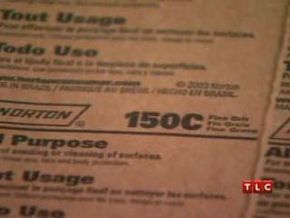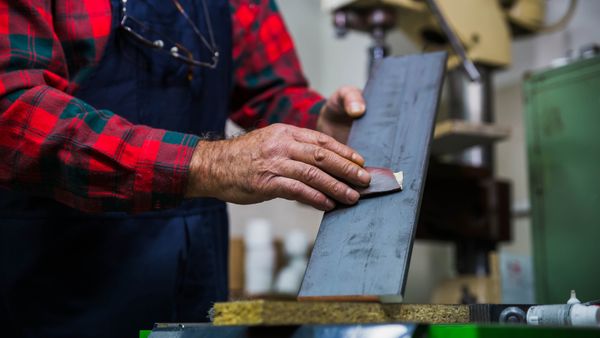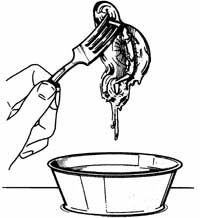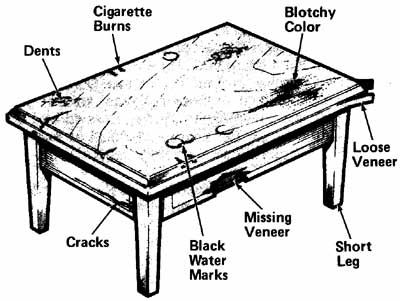By: HowStuffWorks.com Contributors |Updated: Nov 15, 2023

Sandpaper contains sharp edges that cut away at wood or metal. The abrasive particles are glued onto backing material such as Kraft paper with a bonding agent. Different grades of sandpaper grit represent the difference in the quality of the abrasive material.
Industrial-grade sandpaper uses higher quality materials than commercial-grade but is only available in specific stores. Sandpaper is also measured by its grit size — the number of sharp particles per square inch of sandpaper. The larger the grit size, the more edges there are and the smoother the sandpaper.
Advertisem*nt
The density of the grit is important, too. Open-coated sandpaper has gaps between the grits, allowing sawdust to gather so it doesn’t interfere with the sanding. Closed-coated sandpaper, on the other hand, doesn’t have those open spaces.
Contents
- Choosing the Right Sandpaper Grit
- Go From Coarse Sandpaper To Fine Grit Sandpaper
- Types of Sandpaper Grit
Choosing the Right Sandpaper Grit
You need to choose the grit size of sandpaper depending on the particular job you are trying to accomplish. For heavy sanding and stripping, you need coarse sandpaper grit measuring 40- to 60-grit; for smoothing surfaces and removing small imperfections, choose medium sandpaper from 80- to 120-grit sandpaper. To finish surfaces smoothly, use a super fine sandpaper with 400- to 600-grit.
Advertisem*nt
Go From Coarse Sandpaper To Fine Grit Sandpaper
Many jobs require you to “go through the grits.” This means you start the project using lower-grade, coarser grits before using finer grits of sandpaper later. Each time you advance to a higher grit sandpaper, you remove the scratches from the previous layer. Ultra-fine sandpaper grits can be a last step when using progressively finer grits. Let's say you're hand-sanding wood down to the bare wood, a sandpaper grit chart can help you plan the entire project.
Advertisem*nt
Types of Sandpaper Grit
There are four main types of sandpaper grits: aluminum oxide, garnet, silicon carbide and alumina zirconia. Aluminum oxide lasts longer than the other kinds of grits since it contains a self-renewing property. Garnet wears out the fastest but produces the smoothest surface. Silicon carbide is ideal for sanding harder materials such as metals and plastic. Alumina zirconia sands aggressively, so it's also an option for rough jobs.
Advertisem*nt
Sandpaper Grit FAQ
What are the different grits of sandpaper?
There are many different grits available ranging from 60 to 7,000. The most common include 60 grit (coarse), 100 grit (medium), 220 grit (fine) and 400 grit (ultra-fine). There are also different types of sandpaper, such as ceramic alumina, silicon carbide and aluminium oxide.
What is 220-grit sandpaper used for?
If you‘re looking to sand a surface in between paint coats, you may want to opt for 220-grit sandpaper.
What is 400-grit sandpaper used for?
400-grit sandpaper is very fine, so it’s generally used for the final sanding of wood for a smooth finish.
What is 2000-grit sandpaper used for?
Finer sandpaper above the 400-grit mark is only used to lightly clean up or polish surfaces with scratches or streak marks.
Is there a 20-grit sandpaper?
20-grit sandpaper is ultra-coarse grit sandpaper with abrasive grains and is mostly used in industrial sanding projects. This type is good for the first step in removing varnish or paint from wood surfaces before moving on to medium grit sandpaper and fine grades of sandpaper grit.
Cite This!
Please copy/paste the following text to properly cite this HowStuffWorks.com article:
Citation
Related Links

Up Next
Can you polish metal with sandpaper?
Explore More

You May Like
How to Strip Stain From Wood
Explore More

Keep Reading
How to Stain Wooden Furniture
Explore More
Advertisem*nt
Advertisem*nt
Loading...
\n\n\t\t\t\t
`;t.byline_authors_html&&(e+=`By: ${t.byline_authors_html}`),t.byline_authors_html&&t.byline_date_html&&(e+="|"),t.byline_date_html&&(e+=t.byline_date_html);var i=t.body_html.replaceAll('"pt','"pt'+t.id+"_");return e+=`\n\t\t\t\t
\n\t\t\t\t
\n\n\t\t\t\t
${i=i.replaceAll("#pt","#pt"+t.id+"_")}
\n\n\t\t\t
`}(a);this.loadedDiv.innerHTML+=n,document.title=a.title+" | HowStuffWorks";let s="content-loaded-"+a.id,l=document.getElementById(s);l.dataset.contentId=a.id;let o=l.querySelectorAll(".lazyload");HSW.utilities.lazyLoadElements(o),HSW.ux.editorial.init({twitter:!0,facebook:!0,instagram:!0}),l.querySelectorAll(".toc a").forEach(t=>{t.addEventListener("click",t=>{t.preventDefault();let e=t.target.dataset.target,i=document.querySelector("a[name='"+e+"']");i?i.scrollIntoView({behavior:"auto"}):console.error("Unable to locate target with name "+e)})});try{if(userData.adsActive)if(HSW.utilities.isMobile()){l.querySelectorAll(".ad-mobinline").forEach(t=>{t.setAttribute("id","ad-wrap-mobinline"+r),t.childNodes[0].setAttribute("id","ad-div-mobinline"+r),void 0!==HSW.ads&&HSW.pq.add(()=>{HSW.ads.addNewUnits(["ad-div-mobinline"+r])},"ads"),r++})}else{let t=document.createElement("div");t.setAttribute("id","ad-after-"+e),t.classList.add("ad-inline","mb-8","bg-gray","w-max-full","h-min-90","text-center");let a=document.createElement("div");a.setAttribute("id","ad-div-inline"+i),t.appendChild(a),l.after(t),void 0!==HSW.ads&&HSW.pq.add(()=>{HSW.ads.addNewUnits(["ad-div-inline"+i])},"ads")}}catch(t){console.error(t)}if(window.setupSinglePageUX(l),history.pushState)try{history.pushState(null,a.title+" | HowStuffWorks",a.href)}catch(t){console.warn(t)}var c=[];a.taxonomy.forEach((t,e)=>{c[e]=t.title.toLowerCase()});var d=c.join("/"),h=[];a.authors.forEach((t,e)=>{h[e]=t.first_name.toLowerCase()+" "+t.last_name.toLowerCase()});var g=h.join(",");pageMetricsData.href=a.href,pageMetricsData.title=a.title,pageMetricsData.tax=d,pageMetricsData.aType=a.asset_type,pageMetricsData.cType=a.type+"-continuous",pageMetricsData.template=a.template,pageMetricsData.source=a.source,pageMetricsData.sponsor=a.sponsor,pageMetricsData.author=g,pageMetricsData.contentid=a.id,pageMetricsData.image=a.hero_image,pageMetricsData.page=0,pageMetricsData.pubDate=a.publish_date.slice(0,10),pageMetricsData.editDate=a.last_editorial_date.slice(0,10);const u=/[^\da-z_]/i;let p=HSW.utilities.isMobile()?"hsw_lite":"hsw";a.taxonomy.slice(1,3).forEach((t,e)=>{p+="|"+t.title.replace(u,"").toLowerCase()}),pageMetricsData.adUnit=p,Alpine.store("share",{title:pageMetricsData.title,url:pageMetricsData.href,image:pageMetricsData.image}),function(t,e){let i=t.href.split(".com/").pop();dataLayer.push({event:"virtual-page-view",virtualPageUrl:i,virtualPageTitle:document.title,pageNbr:0}),dataLayer.push({event:"raw-event-interactive",eventCategory:"page-interaction",eventAction:"continuous-load",eventLabel:"new-content",eventValue:e+1,virtualPageUrl:t.href})}(a,this.items.length);const m={...pageMetricsData};t.items.push(m);for(var f=document.getElementsByClassName("new-content-loaded"),v=0;v